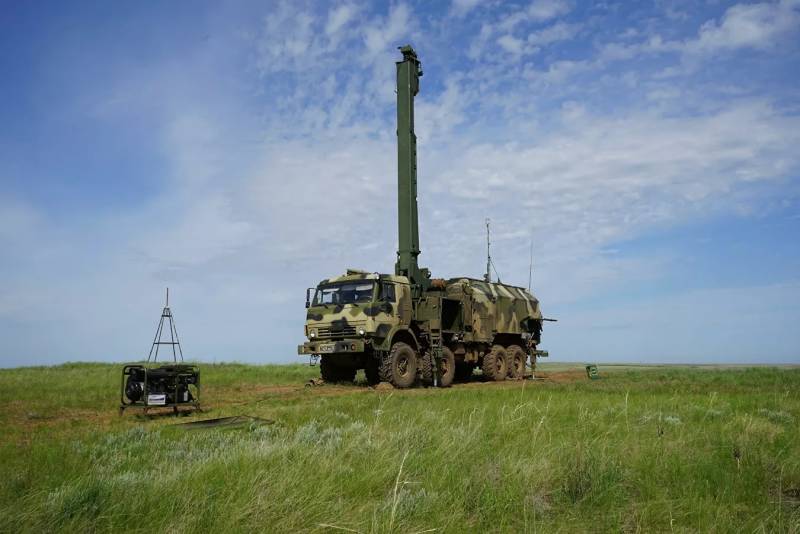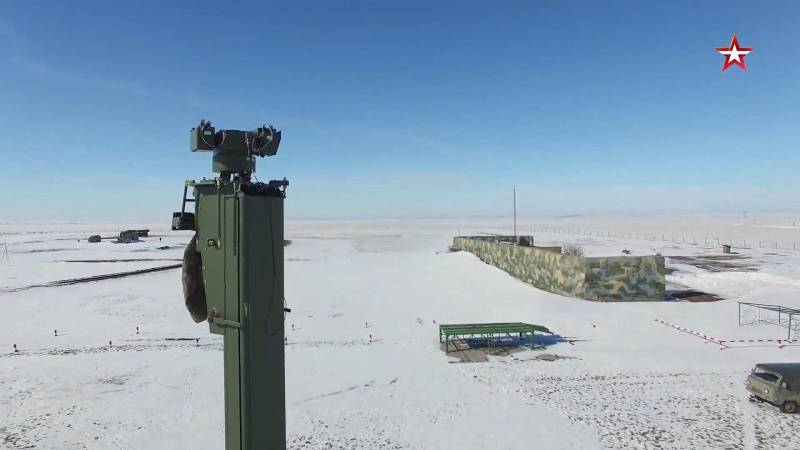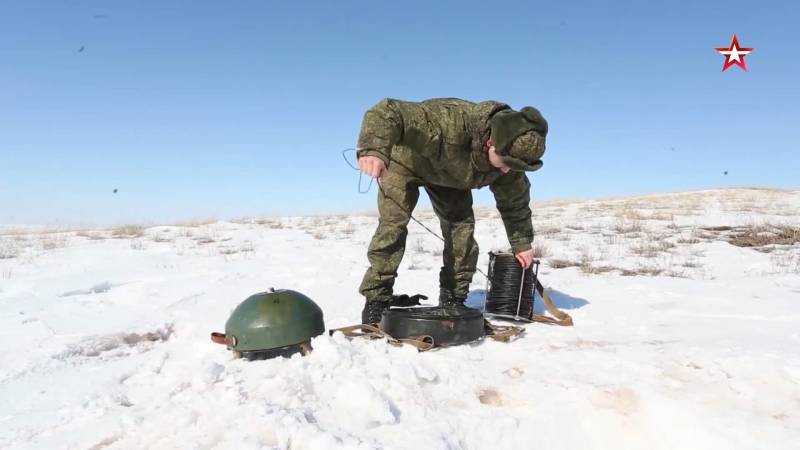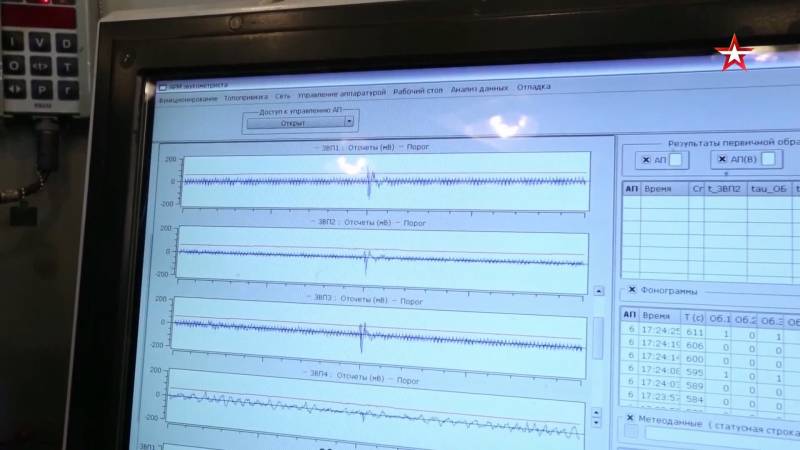"Penicillin" goes to the troops
But the armament of the Russian army arrives at a promising automated sound-thermal complex (AZTK) of artillery reconnaissance 1B75 "Penicillin". One of the training centers already has such equipment, and now serial products are going to the troops. The first batch of new complexes was handed over to the troops in December last year.
From trials to troops
The first official reports on the development of a promising AZTK appeared in the spring of 2017. At the same time, the Zvezda TV channel openly demonstrated the main assets of the complex and the principle of their operation. Later, the development organization revealed new details and plans for the future. Then it was reported that the product "Penicillin" will go into series in 2019.
Against the background of the necessary tests, in the summer of 2018, the AZTK 1B75 was shown at the Army forum. However, only a mock-up of the complex was demonstrated during the exhibition, while the real equipment remained at the training ground.
In April 2020, it became known that by the end of the year the Penicillin complex will be transferred to the 631st training center for the combat use of ground forces artillery in the Saratov region. After receiving the equipment, the center had to master it and ensure the preparation of new calculations for the subsequent deployment of AZTK in the troops.
Already in May, it was reported that the training center had already received its AZTK 1B75. In addition, the army made a fundamental decision on the procurement and deployment of new reconnaissance complexes. Deliveries were supposed to begin in 2021. The first Penicillin filling stations were planned to be put into service with artillery regiments and ground forces brigades. Then such equipment will begin to be transferred to coastal troops. fleet.
On January 22, 2021, the development organization announced the start of deliveries of serial products. As it became known, the first batch of the Penicillin complex was handed over to the customer back in December last year. The volume of the batch and the operator of this equipment are not specified. It should be noted, however, that the acceptance of the first batch took place somewhat ahead of the previously planned schedule.
Intelligence tools
Product 1B75 was developed by the Vector Research Institute of the Vega Concern (part of Ruselectronics) as part of the Penicillin R&D Center. The task of the project was to create an artillery reconnaissance complex capable of determining the coordinates of the enemy's artillery and issuing target designations to its fire weapons. It was also planned to use the complex to adjust the fire of its artillery.
"Penicillin" is made on a serial four-axle automobile chassis, providing high mobility. Behind the cockpit there is an equipment block with a lifting mast and a KUNG with equipment and crew workstations. Jacks are provided for leveling in position. The complex also includes a remote generator for power supply of operating systems.
The mobile optoelectronic module "Penicillin-OEM" is located on the lifting mast. 6 television and 6 thermal imaging cameras are located in a single module case. The signal from all cameras is simultaneously transmitted to the processing means and used for the necessary calculations.
The complex also includes a set of sound receivers. They are made in the form of separate modules installed directly on the ground according to a given scheme. The receivers detect sound waves propagating along the ground and transmit signals to the computer complex via a wired connection, supplementing the data from the optoelectronic module.
During operation, the "Penicillin-OEM" product monitors the surrounding area and monitors flashes from cannon shots or missile launches. Break detection is also possible. In parallel, the sound receivers monitor the ground vibrations generated by firing or explosion of shells. Using optics, the direction to the flash is determined, and the distance is calculated from the time difference between the optical and sound signals. Then this data is converted into coordinates and transmitted to the command post.
One complex 1B75 is capable of controlling a section 25 km wide. It is designed to detect enemy artillery batteries and issue target designation to fire weapons. Also, "Penicillin" can calculate the coordinates of the fall of shells and adjust the fire of its artillery. Calculating the coordinates of a single target takes no more than 5 seconds. The error of such calculations is not specified.
Main advantages
The Russian army already has a number of artillery reconnaissance complexes and spotters of one kind or another. The new "Penicillin" is similar in function to them, but it has a number of important differences that give it noticeable advantages. Basically, the benefits are associated with different operating principles.
Like other artillery reconnaissance complexes, the new Penicillin is self-propelled and highly mobile. At the same time, it uses a wheeled chassis, which has well-known advantages over tracked platforms. First of all, it reduces the cost of operation and simplifies transportation over long distances.
Older reconnaissance systems used the principle of radar detection and, accordingly, unmasked themselves with radiation, risking becoming another target for artillery. The 1B75 product works only for reception and does not direct any radiation towards the enemy, which makes it difficult or impossible to detect it.
Sound-thermal detection means are fundamentally invulnerable to electronic warfare. Theoretically, the enemy can suppress the optics by appropriate means, but for this it is necessary to know the coordinates of "Penicillin". Effective and specialized means of jamming receivers do not yet exist.
Optical and sound detection tools, combined with modern computing tools, provide high accuracy and speed. Due to modern means of communication, the AZTK "Penicillin" is fully included in the artillery control loops, which speeds up the transfer of data and the solution of combat missions.
The only noticeable drawback of the complex is the relatively long time to determine the coordinates of the enemy - from a shot to the issuance of data. This interval is determined by the range to the gun and the speed of the sound wave in the ground. Further processing of the received signals is performed by a high-speed computer and takes minimal time. However, even with all objective limitations, the target detection period does not exceed 5 s and does not interfere with effective work.
Future systems
According to news Last year, AZTK 1B75 "Penicillin" will be put into service with brigades and regiments of missile forces and artillery of land and coastal forces. Each such formation requires at least one intelligence complex, which makes it possible to present the required production volumes.
According to open data, now the ground forces have more than 30 regiments and brigades of barrel and rocket artillery. Coastal troops include 8 brigades, regiments and divisions. Thus, to cover all the needs of our artillery, at least 40 new reconnaissance complexes are needed.
To date, the army has received one Penicillin complex for training personnel and an unnamed number of serial products for deployment in the army. It can be assumed that the procurement of such complexes will continue for more than one year and will end with the re-equipment of most of the formations or all available parts. This lengthy process always begins with the delivery of the first product - and this step was taken in December.




Information